
展讯要求
展览基本信息时间:2017年8月16日-12月13日
地点:威尼斯亚美尼亚馆
主办:威尼斯亚美尼亚馆
协办:异想国度、鹰皇国际
展览前言:见附件文章
海报:见附件
参展作品:见附件
(作品名称,创作时间,年代,尺寸,材质)
2017威尼斯双年展毛锎《高等动物》个展于8月19日开幕
由威尼斯双年展意大利馆策展人Grasso先生的邀请、FAC画廊张艺川先生的筹划,中国艺术家毛锎2017威尼斯双年展《高等动物》个展于8月16日-9月13日在双年展官方空间亚美尼亚馆正式开展,开幕式为19日16:00,展出近两年《高等动物》系列的油画及雕塑作品。
后经开幕式观众热烈的反应,展览被主办方延长至12月。
傲娇与优雅
——解析毛锎的美学风格
文:Giorgio Grasso
毛锎70年代生人,生于中国湖南,后转至广州。艺术专业出身。
青年时期跨于驾轻就熟的摄影以及广告业。早年具备了良好的绘画技巧,但未有作品问世,毛锎戏称,那是他的卧薪尝胆时期。2010年起作品开始流于公众。
若以2010年为元年,毛锎的艺术创作生涯大约分为三个阶段。
2010-2014年,此些年间毛锎在从广告行业跨入艺术界后,他果断地放弃了特别广告的观念艺术,而是倡导回归以技艺为主导的传统油画。
2014-2015年,此些年毛锎作出了充满颠覆和魔幻主义色彩的小西游系列,充满克制、寓言气息的理念逐渐建立并趋向高度统一。
2015-2017年,此次高等动物个展的作品大约都出自这个时期,此些年毛锎开始逐步扩展自己的艺术品类,在统一的美学风格下让绘画和雕塑遥相呼应。

毛锎2016年《高等动物》10号布面油画90x60cm中

毛锎2016年《高等动物》11号布面油画90x60cm小
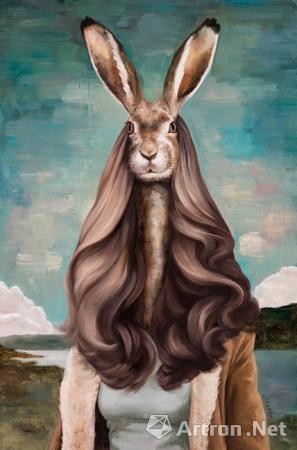
毛锎2016年《高等动物》12号布面油画90x60cm小

毛锎2016年《高等动物之丛林女人》布面油画90x60cm小

毛锎2016年《高等动物之低飞的云》布面油画90x60cm小
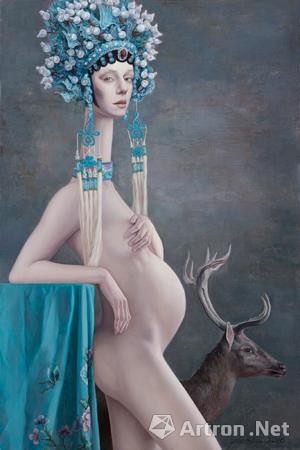
毛锎2016年《高等动物之东风西孕》布面油画90x60cm小

毛锎2016年《高等动物之古装女人》布面油画90x60cm小

毛锎2016年《高等动物之静谧的丛林》布面油画90x60cm小
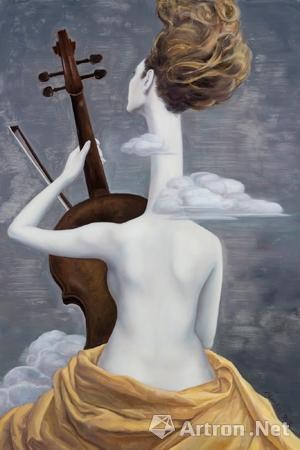
毛锎2016年《高等动物之拉琴的女人》布面油画90x60cm小

毛锎2016年《高等动物之梨园》布面油画90x60cm小
毛锎坦言受亨利·卢梭以及萨尔瓦多·达利影响颇深,并延伸出自己一套超现实主义的方法论。毛锎的高等动物系列兼具两位大师的一些特点。毛锎的笔触清晰细腻,像卢梭一样,他的画中一种绝对的清晰感,这种绝对的清晰反而导致了一种绝对的神秘感。另外在绘画语言上毛锎更倾向于生活化的描述,运用写实手段,刻画那些离奇的形象和写实的细节,像达利一样,他的画作会产生一种幻觉与梦境。不过毛锎的画作更趋于平和,静谧以及稳重少有达利的轻狂、怪诞以及撕裂感,也比卢梭的画作多了一份成熟与距离感。
毛锎的高等动物系列是清新、优雅、时尚、诗性、极具美感的。善用亮色,追求明快。
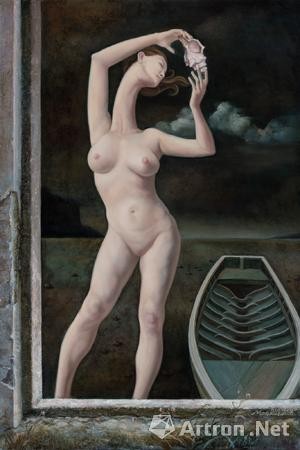
毛锎2016年《高等动物之女人与海》布面油画90x60cm小
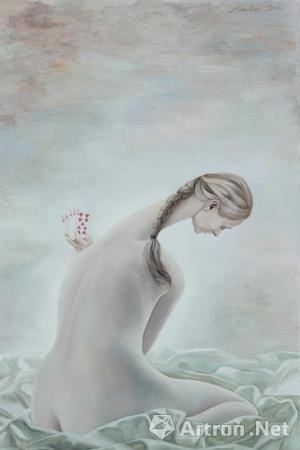
毛锎2016年《高等动物之女人与纸牌》布面油画90x60cm小
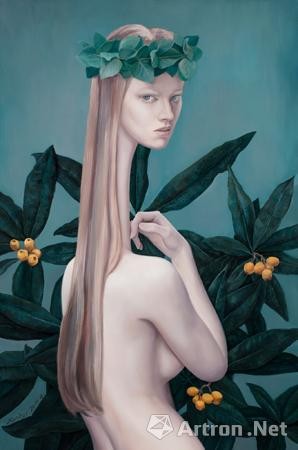
毛锎2016年《高等动物之枇杷与女人》布面油画90x60cm小
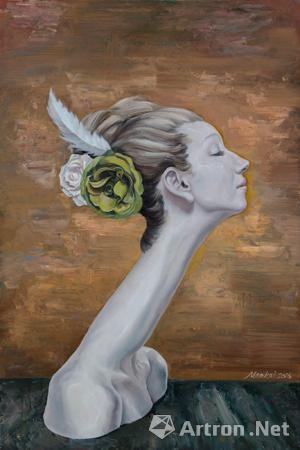
毛锎2016年《高等动物之遥想的女人》布面油画90x60cm小
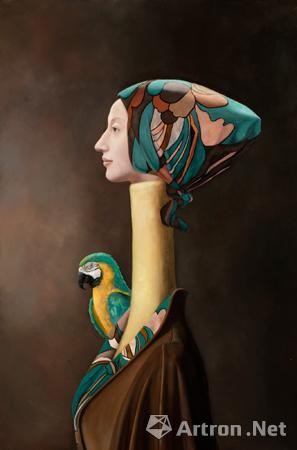
毛锎2016年《高等动物之鹦鹉与女人》布面油画90x60cm小

毛锎2016年《高等动物之自视》布面油画90x60cm小
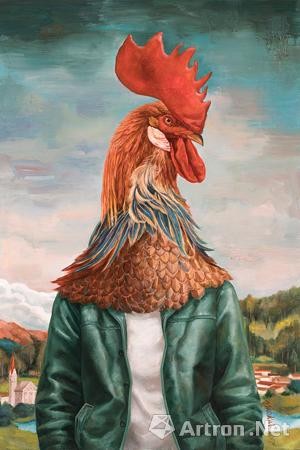
毛锎2017年《高等动物》14号雄鸡先生布面油画90x60cm小

毛锎2017年《高等动物之藏羚羊》布面油画150x100cm中
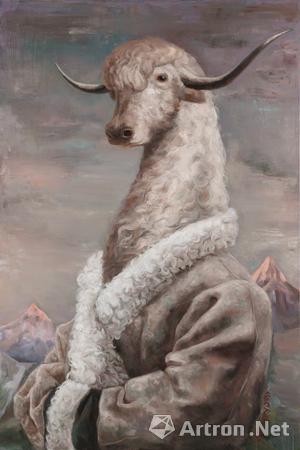
毛锎2017年《高等动物之牦牛汉子》布面油画150x100cm中

毛锎2017年《高等动物之平行的世界》布面油画60x90cm中

毛锎2017年《高等动物之月下青柠》布面油画80x80cm中
而且细看之下,毛锎的画又是有批判性的。但他的批判性并不同于我们所熟知的中国60一代艺术家,如曾梵志,岳敏君,方力钧等。60一代艺术家因为经历了中国集体主义时代,画作多以描述群体行为以及群体的空间感从而达到某种批判。而毛锎生于70年代,生长在中国个人自由主义意识兴起的时代,他的作品里的对象多为拥有绝对自由个人空间的孤独的人或物,从细节和神态对于个体进行剖析从而完成批判。
毛锎的作品背景多是风景,开放式的空间,人物衣着复古,或者半赤裸,充满了独立,审慎,自由的气质,在画作中你很难察觉到人类工业文明的成果。毛锎早年经营于工业化程度极高的广告业,但是毛锎却避开了对于工业文明的描述与追逐,增多了一份避世的意味。而高等动物的雕塑可以看作是同一美学下的延伸,材质以金属为主,当抽离掉画作中的色彩以及背景之后,以钢筋筑人,雕塑如同生活在钢筋森林里的人类,它们只能传达情绪,无法完成交流,增添了一份哥特式的哀伤。

毛锎雕塑2017年《登天踢马》铜21x17x55.5cm
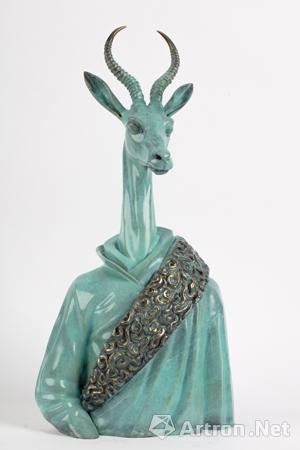
毛锎雕塑2017年《高等动物之藏羚羊》铜28x15x49cm
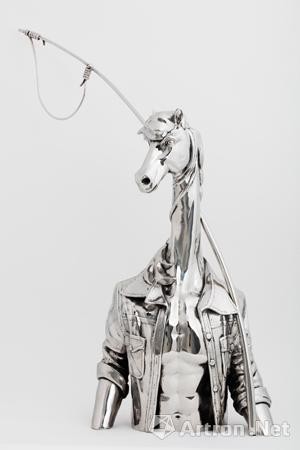
毛锎雕塑2017年《高等动物之赶马的汉子》不锈钢27x23x47cm

毛锎雕塑2017年《高等动物之猴与桃》铜26x13x44cm
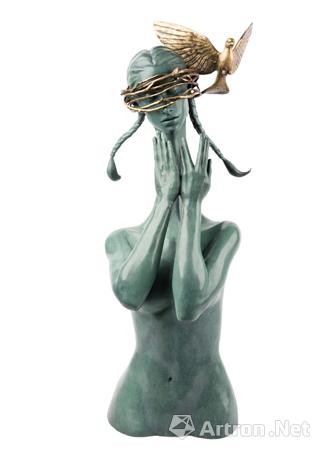
毛锎雕塑2017年《高等动物之静谧的丛林》铜86x33x38cm

毛锎雕塑2017年《高等动物之龙头大哥》不锈钢中28x22x50cm
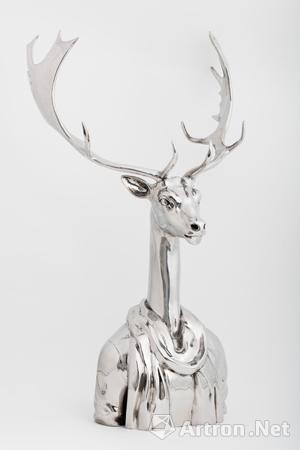
毛锎雕塑2017年《高等动物之鹿先生》不锈钢中28x22x48cm
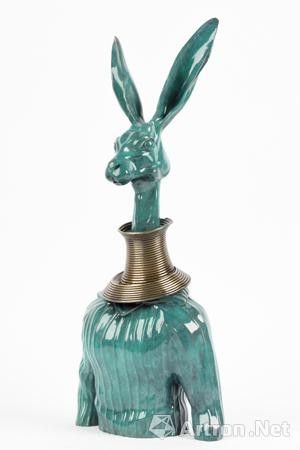
毛锎雕塑2017年《高等动物之兔子先生》铜22x12x49.5cm
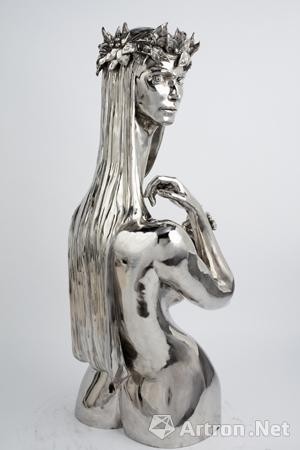
毛锎雕塑2017年《高等动物之叶冠女子》不锈钢80x34x31cm
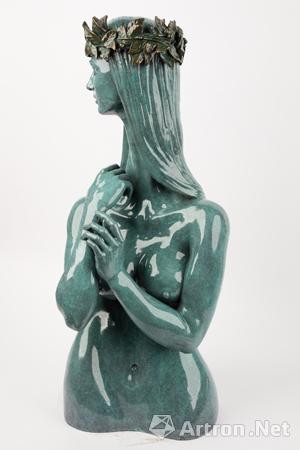
毛锎雕塑2017年《高等动物之叶冠女子》不锈钢80x34x31cm
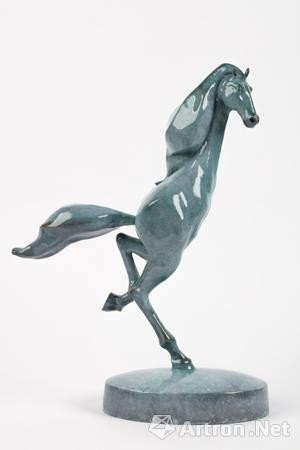
毛锎雕塑2017年《两腿奔马》铜32x15x44.5cm
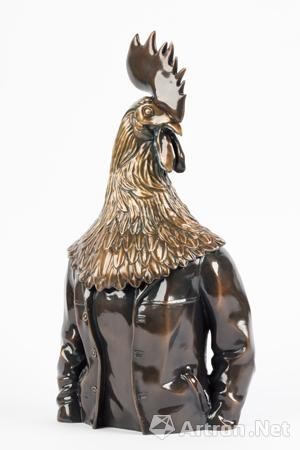
毛锎雕塑2017年《雄鸡先生》铜25x15x45cm
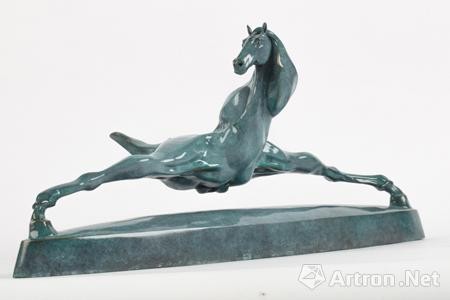
.毛锎雕塑2017年《一字马》铜60x26x26cm
毛锎对于人或动物的塑造是克制的,克制到如果不是高耸的脖颈,你很难察觉他的画是超现实主义。毛锎的节制同样产生了一种间离感,观众得以一种保持距离态度看待画作中的人与物。将观众置于上帝视角去审视和思考画作中高耸脖颈的意义。
人类在地球上亿年的历史中,一直处于食物链的中下端,后来通过解放双手,扩充脑容量,并产生文明继而在食物链上超车站在顶端。毛锎给我们抛出了几个问题,高傲的人类愈来愈骄傲,眼高于顶,而动物直立脊椎完成拟人化,那么它们与人类的差异何在?
高等动物充满了对于人类过去与未来的辨思,横亘在画作之中的是一部毛锎为我们书写的人类简史。
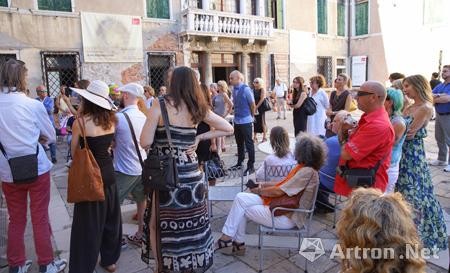
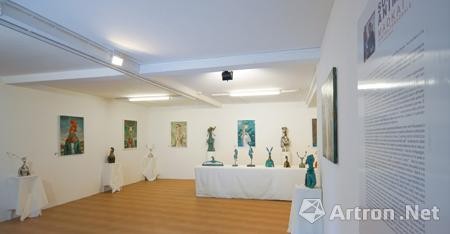

毛锎是一个拒绝定义自己的艺术家,从而完成了对于几个行业的横跨,几种艺术概念的攀爬,从而步履不停,前途将将在望,后会徐徐可期.
Giorgio Grasso
意大利著名艺术评论家、艺术史学家、社会活动家、MAG 画廊艺术总监,FAC 意大利当代艺术基金会负责人,策展人。策划了DOLOMITI国际艺术双年展(2016),EXPO世博当代艺术展(2015),威尼斯艺术双年展意大利国家馆等意大利国内及国际艺术展。
英文版:
Arrogancy and Elegancy
-Methodology of Mai Kai's work
Mao Kai was born in Hunan province (China) in 70s, and later he transferred to Guangzhou province and majored in art.
He was engaged in photography and advertising design in youth ages. He has good painting skills in early years, but works didn't come out. Mao Kai said in jest that it was his hardship period. His works began to appear in public’s eyes since 2010.
If the year 2010 was the first year of an era, Mao Kai's artistic career was divided into three periods. Mao Kai transferred from advertising design into the art world in 2010 – 2014. Then he decisively gave up the advertising-oriented art from: conceptual art, and he advocated to return to the art-oriented traditional oil painting.
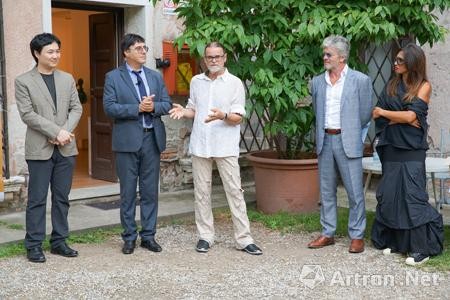
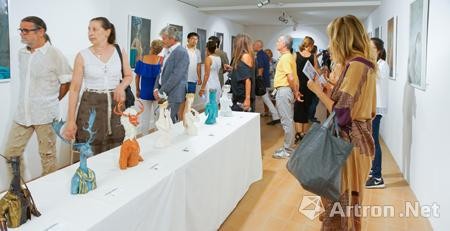
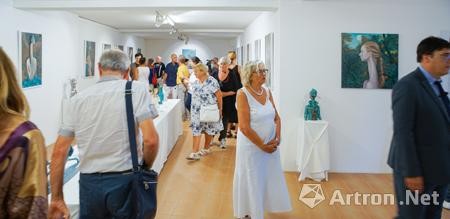
Mao Kai made a series of Journey to the West that was full of the color of subversion and magic in 2014-2015. The idea that was full of restraint and fable gradually established and tended to a high degree of unity.
His works of the Superior Animal Exhibition were appeared in 2015 – 2017. In this period, Mao Kai began to gradually expand his own art category and combined painting and sculpture in a unified aesthetic style.

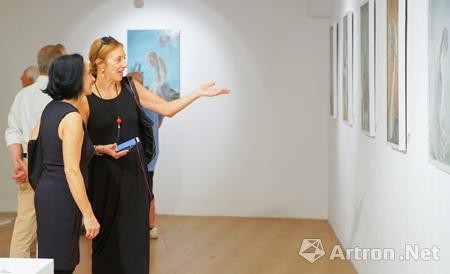
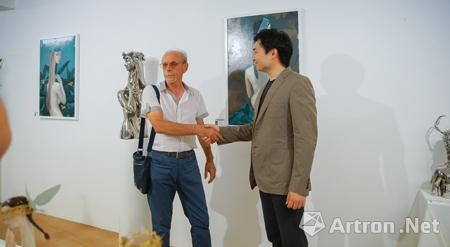
Mao Kai said frankly that he was influenced by Henry Rousseau and Salvador Dalì deeply. So he extended his own set of methodology: Surrealism. Mao Kai's Superior Animal series combined the features of the two mentors. Mao's brush strokes were clear and delicate, just like Rousseau, his paintings was full of an absolute sense of clarity, and this absolute clearance led to an absolute sense of mystery. In addition, in the painting language, Mao is more inclined to the description of life. He used realistic means to describe the bizarre image and realistic details, like Dalì, his paintings produced a kind of illusions and dreams.
But Mao Kai's paintings tend to be more peaceful, quiet and stable. And his paintings have few frivolous, grotesque and tearing sense like Dalì. Moreover, his paintings have more sense of mature and distance than Dali.


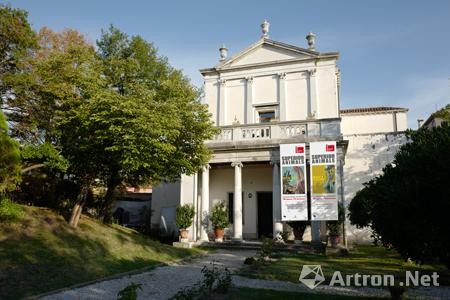
Mao Kai's Superior Animal series is fresh, stylish, poetic and highly aesthetic. Moreover, he makes good use of bright colors.
And under the scrutiny, Mao’s painting is critical. But his critique is different from our well-known Chinese artists in 60s, such as Zeng Fanzhi, Yue Minjun, Fang Lijun and so on. The paintings of the artists in 60s described the behavior of groups and groups of space to achieve a certain criticism, because they were born in the era of Chinese collectivism. However, Mao was born in the 1970s when the personal liberal consciousness rose in China. The objects in his works are more lonely people or things that have absolute free personal space. He often analyzes the individual from the details and the demeanor to complete the critique.
The most of Mao's work background is scenery and open space. The people in his works dressed in retro style or in semi-naked style and were full of independent, prudent, free temperament. In his paintings, you are difficult to detect the results of human industrial civilization. In the early ages, Mao was engaged in the advertising design that has a high degree of industrialization, but Mao avoided the description of industrial civilization and chase and more to describe the meaning of masquerade. The sculpture of superior animals can be seen as an extension of the same aesthetics. The material is mainly metal, and when the painting separated from color and background, he painted people with a steel bar, and the sculpture is like the human beings living in the reinforced forest, they only can convey emotions and can not complete the communicate. This style added a sense of Gothic sadness.
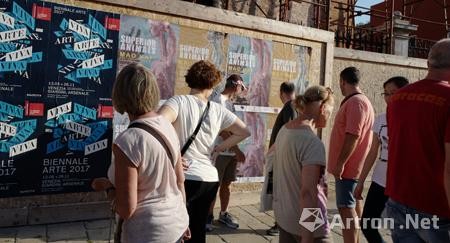
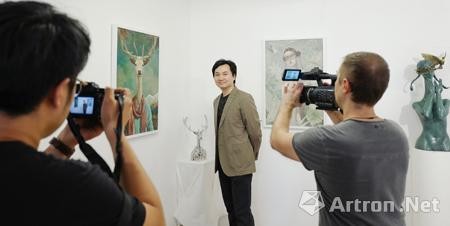
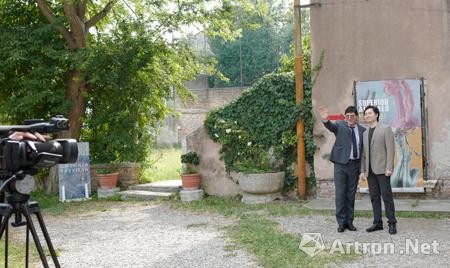
When Mao Kai shaped the animal, he was restrained. If it was not tall towel, it was difficult to detect that her painting is surrealism. Mao's restraint also produced a sense of separation, so the audience looks at the paintings filled with a sense of distance. He put the audience in the perspective of God to examine and think about the meaning of the tall neck in the painting.
Mankind has been in the middle and lower stages of the food chain over the years in the earth. Later, through the liberation of hands, expanding brain capacity, and producing civilization, mankind overtake at the top of the food chain. Mao Kai gave us a few questions: mankind is more and more arrogant and they often have grandiose aims but puny abilities but the animals’vertebra are upright and complete anthropomorphic, then are there any differences between human and animals?
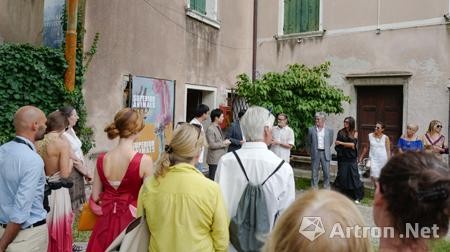
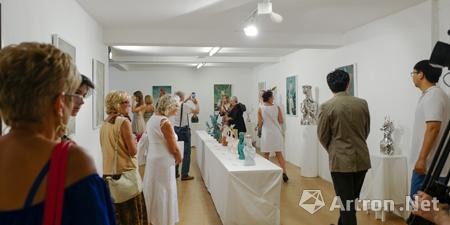
The superior animals are filled with a reflection of the past and the future of mankind, which is a brief history of mankind written to us by Mao Kai.
Mao is an artist that has no definition for himself. He went across several industries and climbed several artistic concepts. Perhaps surprise is at the next intersection.
Giorgio Grasso
Art critic, art historian, curator of MAG gallery, founder of contemporary art foundation. his has curated the Armeria pavilion in the biennial of Venice 2017, the biennial of Dolomiti 2016, co-curated by the Italian pavilion at the Venice Biennial 2011.
意大利文版:
傲娇与优雅
——解析毛锎的美学风格
MAO KAI è un artista contemporaneo cinese, nato negli anni 70 a Hunan. Ha studiato e ha conseguito il titolo di studi in Belle Arti e ora vive a Canto, Cina. In gioventù, la sua ricerca artistica utilizzava medium come la fotografia e la pittura concepita attraverso una gestualità performativa che lo portò ad avere un discreto successo sulla scena dell’arte. Le sue opere però rimasero chiuse al pubblico fino al 2010 che divenne l’anno della svolta con l’inizio delle numerose mostre pubbliche di MAO KAI. Considerando il 2010 come anno di partenza per la sua carriera artistica possiamo suddividere quest’ultima in tre fasi: dal 2010 al 2014 si evince l’abbandono dell’ambito pubblicitario per rivolgersi verso quello dell’arte scartando l’essenza dell’arte concettuale, da lui ritenuta “troppo legata alla comunicazione pubblicitaria”, per avvicinarsi al medium pittorico nella sua accezione più tradizionale e, nel corso degli anni, la sua produzione vedeva la nascita di opere raffinate, realistiche nella loro forma e ricolme di metafore. Tra il 2014 e il 2015 le metafore nelle opere di MAO KAI si sono trasformate in sovversione e magia nella sua celebre serie Westward Journey. E infine dal 2015 a ora, un tempo che ha scandito e scandisce un’evoluzione nella pittura dell’artista sempre più cosciente e matura nella sua realizzazione tecnica. Questo è il periodo per la serie Superior Animals che comprende sia pittura che scultura.
L’artista ha sviluppato la propria idea di surrealismo guardando a Maestri come Henri Rousseau e Salvador Dali rielaborando il concetto della loro estetica attraverso una pittura attenta e sofisticata della quale Superior Animals ne è la sublimazione finale. Questa serie sintetizza l’esperienza pittorica di MAO KAI in una chiarezza assoluta scandita dall’andamento delle cromie nitido e chiaro, come lo era per Rousseau. Ma è proprio in questa chiarezza che si cela un mistero altrettanto assoluto, nella rappresentazione della realtà attraverso l’uso di un linguaggio, a tratti, criptico che mostra immagini bizzarre dipinte con la stessa cura maniacale con la quale si potrebbe copiare un vaso di fiori, proprio come in Dalì e nei suoi “sogni”. Ma le opere dell’artista non si fermano qui, sono tese verso un infinito di possibilità e visioni che anela a una pace assoluta, costante ed è in questo scarto che la serie Superior Animals si colloca. I dipinti e le sculture sono come narrazioni misteriose descritte attraverso la composizione di un immaginario fiabesco, ormai, ben definito e noto soprattutto alla tradizione cinese. Tuttavia le opere di MAO KAI differiscono non poco dalla precedente generazione di artisti come: Zeng Fanzhi, Yue Minjun e Fang Lijun che hanno vissuto l’epoca del collettivismo negli anni 60. MAO KAI, infatti, nato negli anni 70, ha vissuto la diffusione del liberalismo personale e i suoi dipinti si focalizzano maggiormente sull’individuo in quanto tale, sulla singolarità in un accezione narcisistica.
I soggetti di Superior Animals ci raccontano la nostra storia, il nostro passato, la nostra evoluzione mettendo in discussione il dominio umano sulla catena alimentare, per ricordarci cosa siamo veramente attraverso una domanda che guarda ad una possibile distopia futura: “Quando gli animali conquisteranno la posizione eretta, quale sarà la differenza tra noi e loro?” Ed ecco quindi il rivelarsi di una serie suggestiva che ci mostra animali vestiti in stile vintage che, con occhi coscienti, restituiscono lo sguardo all’osservatore, fieri e decisi. Oppure ecco donne dal lungo collo di cigno che ci impone una riflessione, indotta dallo sguardo stesso, perché questo sono le opere di MAO KAI immagini costruite per interagire con l’osservatore raccontandogli il suo passato per poi proporre una riflessione finale sul suo possibile futuro.
Dott. Giorgio Grasso storico e critico d’arte
Critico d'arte, storico d'arte, curatore della galleria MAG, fondatore della fondazione arte contemporanea. Ha curato il padiglione Armeria nella biennale di Venezia 2017, biennale di Dolomiti 2016, co-curato il padiglione d'Italia nella biennale di Venezia 2011.
Copyright Reserved 2000-2024 雅昌艺术网 版权所有
增值电信业务经营许可证(粤)B2-20030053广播电视制作经营许可证(粤)字第717号企业法人营业执照
 京公网安备 11011302000792号粤ICP备17056390号-4信息网络传播视听节目许可证1909402号互联网域名注册证书中国互联网举报中心
京公网安备 11011302000792号粤ICP备17056390号-4信息网络传播视听节目许可证1909402号互联网域名注册证书中国互联网举报中心
网络文化经营许可证粤网文[2018]3670-1221号网络出版服务许可证(总)网出证(粤)字第021号出版物经营许可证可信网站验证服务证书2012040503023850号